#baltic history
Text
The fact that Prussia from Hetalia was originally the teutonic knights’ order means that there used to be a personification of actual baltic prussian tribes (sort of a brother to Lithuania and Latvia) that German Prussia either killed or weakened and they then disappeard or perhaps stole his identity somehow (???)
Fyi there used to be an actual prussian language related to lithuanian and latvian (it’s now extinct but still).
The fanfic potential is actually INSANE
#aph prussia#hws prussia#hetalia#hetalia prussia#prussia headcanons#prussia#baltic prussia#i know it’s meant to be a silly goofy lil anime but the potential is INSANE#i’ll probably end up writing a fanfic or five#german knights#baltic history
29 notes
·
View notes
Note
You like historical clothing, yes? Would you be willing to either give me some tips or resources about historical Lithuanian clothing for men?
Thank you!!
Sure I who not mind, i choose the ancient baltic clothing
Early Iron Age (I–IV centuries AD)
Clothing is believed to be of a tunic style. Tablet-woven sashes with simple, longitudinal designs are worn, tied at the waist or to embellish the garment edges. The cloth is woolen, woven on vertical frame looms in a 3-shaft twill pattern. Women’s headwear is embellished with small, round or flat metal pieces, their fronts adorned with ornaments hung on twisted, two-stranded wire. Another special type of women’s headwear from this period covers the temples with a symmetrical pair of flat, ring or coil shaped ornaments. We still do not know if this jewelry was worn for specific occasions. The metal ornaments from the period are subtle in form, made of silver filigree, with incrustations of azure blue glass and framed in red, black or green enamel.
In the later part of this period, these types of ornaments, as well as elaborate multicolored glass bead necklaces brought from the Roman Empire, are no longer in evidence. The dominant technique for making ornaments becomes metal casting; decorative elements echo patterns found in tablet-woven sashes: longitudinal designs made up of dots, triangles, or series of open circles. Designs on brooches consist primarily of arched ladders. Long needle-like pins worn by women are bobbin shaped, or less commonly they have rounded blue ends, worn in pairs, joined together with one or two small chains and pinned to the shoulder region. Ornaments worn around the neck have trumpet or cone-shaped ends, often with azure blue dangles. Bracelets are massive and cut from a round piece of metal, or less commonly, made from braided pieces of metal. During this period both men and women wear such arm decorations, usually one on each wrist. Bracelets made of braided metal are especially popular.
Middle Iron Age (V–VIII centuries AD)
The clothing style as well as the cloth worn during the Middle Iron Age remains much the same as before: the woolen cloth is still woven on upright frame looms, and sashes have the same linear patterns. The metal ornaments, however, are not as subtle in style as before. They are much larger and the bodies of many of the pins and brooches are made of bronze and covered with a thin layer of silver; minimizing the amount of precious metal used.
During this period women begin wearing skull caps – a few rows of short woven decorative elements, interspersed with cast flat metal pieces, decorated with metal eyelets and strung together on woolen thread. Bracelets are still massive, with only the portion encircling the wrist being somewhat narrowed, their ends are now wider. Women wear one or two on each arm, while men adopt the habit of wearing one very large bracelent on the left wrist. This is the so-called “warrior” bracelet, intended to protect the wrist when holding a battle shield.
Necklaces made of glass beads are typically worn only by women, although men of the Aukštaičiai tribe also wear such neck ornaments. Both men and women wear amulets made of amber – typically a large bead, cone-shaped at both ends, that was hung from a brooch, sash, or woman’s straight pin. As before, needle-type pins are worn in pairs, connected with small chains and decorated with small hanging ornaments. In the northern regions these are a woman’s primary accessory clothing element; brooches, such as those worn by men, are not found with their clothes.
The women of the southern Baltic tribes use brooches to fasten their clothing. These are circular in shape, cast in bronze or silver, and often decorated with serpent head motifs, or sometimes with poppy seed pods. Men wear leather belts with raised metal clasps, and sashes from which they hang their weapons, and tall boots fastened at the knee with belt buckles.
Late Iron Age (IX–XIII centuries AD)
During the Late Iron Age the ornamentation of the clothing worn (and, we believe, the clothing silhouette itself) changes. Brooches now have a horseshoe shape rather than the earlier circular shape. We find some of them in men’s graves, leading us to surmise that men’s clothing from the period was cut down the center and that the brooches were used as buttons. The tablet-woven sashes now have more complicated patterns of geometric rhombi, and cross and swastika motifs.
Along with woolen cloth, beginning with the 10th century, we now find cloth made of linen. The larger quantity of woven material leads us to believe, that towards the end of this period, the Balts, like other European peoples, have now learned to use horizontal looms. With the advent of flax cultivation, we begin to see the use of thread made of a wool/flax combination in woven sashes and later, in scarves.
As before, women enjoy wearing knotted skull caps, although now their small metal ornaments are no longer cast, but rather hammered into various shapes and embellished with intertwined ellipses, swastikas, triangles and rhombi. These pieces are strung on braided or spun linen thread rather than on strands of wool. Bracelets are mostly of braided metal. Men continue wearing a massive bracelet on their left wrist, but now these are wrapped in a long woven sash and strung with small rings (chainmail). The Semigallian wimples are adorned similarly with small chains strung together on a long string, as are Samogitian womens’ hats/headwear. Maple tree whirligig-shaped ornaments hang from their fronts.
Clothing often is embellished with tiny round metal beads, a style especially favored by Semigallians. Samogitian women string and hang beads in a flat rhombus shape on their robes, so that as they move, the beads touch each other and make a tinkling sound. Selonian women like to pin tubular bronze pins on their robes to form various geometric designs; the tunics of the Latgalian men are similarly adorned.
Important parts of the “dress uniform” of warriors/soldiers are tall boots and a leather belt covered with hammered bronze plates ending in woven bronze tassels. During this period neck ornaments are made of braided metal with loop and hook closures. Those worn by Selonian women have flat, curved ends decorated with geometric motifs; some have additional flat metal pieces or small round bangles arranged in a trapeze shape. Often these bangles are used to form a part of womens’ necklaces along with braided elements and glass beads. As before, bracelets are mostly of braided metal, although their central portions are widened and geometric forms added.
XIII–IV centuries AD
The changes in outfits worn during the 13th – 14th centuries are even greater. Along with the traditional and locally made garments of linen and wool, we now find imported weaves of silk and brocade. Because of their expense, these materials are used only in sashes and textile-based headwear. Plaid scarves can now be found. Headwear has also changed; now it is made of sashes of wool or silk and decorated with small, four or five-sided flat plates; spaces between them are filled with threaded bead embroidery (biserio).
The shape of brooches changes, such that now we find round, cast brooches with a hole in their center used for fastening. Small horseshoe-shaped brooches are found arranged vertically on the right side of the neck, most likely having been used to fasten the opening of a dress or underclothes. Bracelets are uncommon and the ones found are now of a different shape – in the form of bands made from pieces of bent, decorated sheets of metal, or tripartite and joined with loops.
Necklaces are made from small glass beads, with rounded, four-sided, or cross-shaped dangles and seashells. Earrings are a new accessory and are worn primarily by Balt women, who also begin to wear metal-plated belts of the type that men wear, as well as a new “invention” from the West – leather pouches with closures attached to their belts. Also worn are amulets – claws of male bears encased in bronze, and cast bronze keys with rhombus-shaped tops in a gothic style.
The men’s outfits of this period are much harder to determine from the available archaeological material. Nevertheless, we can deduce that men wear woolen socks and tall boots, and linen underclothes. They sport wool tunics woven on a three shaft loom, with their garments held together with bronze plated belts from which would hang a leather pouch and knife.
#lithuanian historical clothing#lithuanian history#historical clothing#ancient baltic#baltic tribes#baltic history#lithuanian hetalian#hetalian#madam of Lithuania answers#ask answered#ask#madam of lithuania#madam of lithuania's ramblings
15 notes
·
View notes
Text



bathing hut.
popular in the 1830's fishing villages along the gulf of riga in the baltic sea. groups of such huts were constructed around a well. from there the water was was heated and passed along raised wood gutters into the huts through a hole in the wall, where it poured straight into the wooden tub. the huts were assembled from readymade parts, including the straw roof, and could be transported along the coast.
#bathhouse#baltic history#fishing village#i quite like the privacy and cozyness of the small hut#as opposed to a big communal bath house#the gutter coming in through the wall looked like in spirited away#but i didn't catch a pic of that so you'll just have to believe me!!#my photos#countryside living#village
8 notes
·
View notes
Text
Wrapped up the next in the series of books about Baltic Europe:
This book is the first book in a series where the second one is one I read before finding it. The second one was a fascinating read in an independent context and I intend to reread with the eyes of the first to see how they work together. This book, as the title indicates, covers the Baltic region from 1492 to 1772. This was the period in which Sweden went from a semi-pagan backwater that had a great deal of snow and dried fish to a military juggernaut that for a time was the wunderkind of Europe.
Eventually the Swedes were drawn into a great war with Poland-Lithuania and Russia that saw, as noted in the previous review, the demise of the last bid for an independent Ukrainian state collapse at the Battle of Poltava. This marked in turn a resurgence of the Russia that in the earlier part of the book under Ivan the Terrible, in the coverage of earlier history came close to securing the control of the Baltic it would in the 18th Century in the 16th. Ivan the Terrible went madder than he already was and sunk his country in a nightmarish hellscape of despotism and created the Time of Troubles in the wake of it, leading to Sweden stepping in to fill the void.
One thing this book also underscores is that states and rulers could and did attain a kind of greatness, the Swedes and the Russians in particular marking this. In a marginal region where nature held sway over all and darkness and decay lurked with a mild shift in weather, let alone by war, the realities of this greatness were to take those marginal conditions make them worse.
It serves, like a history of the Balkans, as a counterpoint to the idea first of Europe as a monolithic mass of civilization and second to the reality that European state power cost Europeans in the areas that were dominated rather than dominating as much as it did people anywhere else in the world. There is nothing in the geography of Europe that spared peoples and cultures the iron fist of imperialism, including imperialism from other Europeans.
Beyond that it's also the history of how the Grand Duchy of Lithuania, the last great medieval pagan state, fell into becoming provinces of first the Baltic German military orders and then the Romanov dynasty. Latvians and Estonians were subjects and never masters of their own state, Lithuanians had a much harder fall from a much greater standpoint. And so too, by the end of the book, does Poland-Lithuania as it ends with the first Partition and the re-establishment for a time of Swedish absolutism.
Norway, meanwhile, spends most of the book as the rural hinterland of Denmark and has yet to make its rise as a modern state. This too should serve as a reminder that geography is never a stable thing, that all states are artificial, and awareness of a nationality does not make a nation or the desire for a state.
9/10.
2 notes
·
View notes
Text
Battle of Grunwald by Polish painter Jan Matejko
Considered as one of the most heroic and grand representations of the histories of Lithuania and Poland. It is currently in the national museum in Warsaw
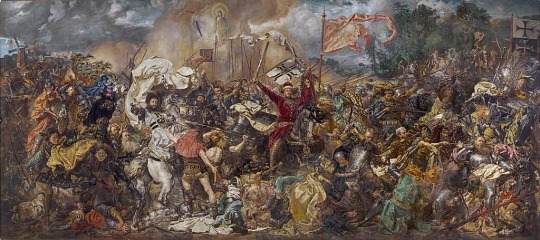
Fought on the 15 of July, 1450 was one of the largest battles in medieval Europe, as well as one of the many victoriously won Lithuanian battles, it is also one of the most important battles in Lithuanian and Polish history respectively.
The battle was fought by the allied armies of the Crown of The Kingdom of Poland and the Grand Duchy of Lithuania against the Teutonic order. Thanks to the tactics and military prowesses of both Grand Duke of Lithuania Vytautas the Great and King of Poland Władysław II Jagiełło, the battle ended in the Polish - Lithuanian victory, with the Teutonic army being left without its Grandmaster Ulrich von Jungingen and Grand Marshal Friedrich von Wallenrode, as both perished in battle

Grand Duke of Lithuania, Vytautas the Great, As depicted by Jan Matejko

King of Poland, Władysław II Jagiełło, as depicted by Jan Matejko in the corner of the painting
#Lithuania#Poland#Baltic History#Lithuanian History#Polish History#Grand Duchy of Lithuania#Crown of The Kingdom of Poland#Teutonic Order#Jan Matejko
1 note
·
View note
Text
Prussia in 6 historical timestamps
yep, though this one was a bit more rushed I got to make a new series... All the relevant info & citations are embedded on the images themselves.
Prussia is a region in eastern Europe /the baltics, also used to be a country. It went from a monastic order, to a divided secular state, to personal union, to empire until the end of WW1 before ending completely with the end of WW2. For more information if needed check the individual maps or ask me directly, cause that might take more than the character limit to give explanations.

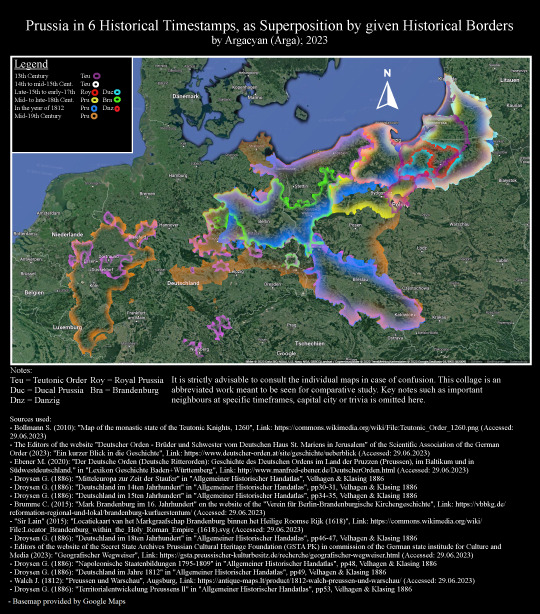




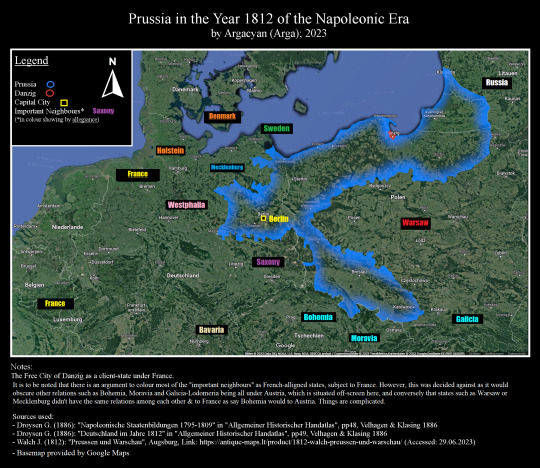

#map#maps#europe#historical map#history#germany#prussia#poland#eastern europe#baltic countries#baltic history#baltic states#germanic#teutonic order#german order#brandenburg
0 notes
Text
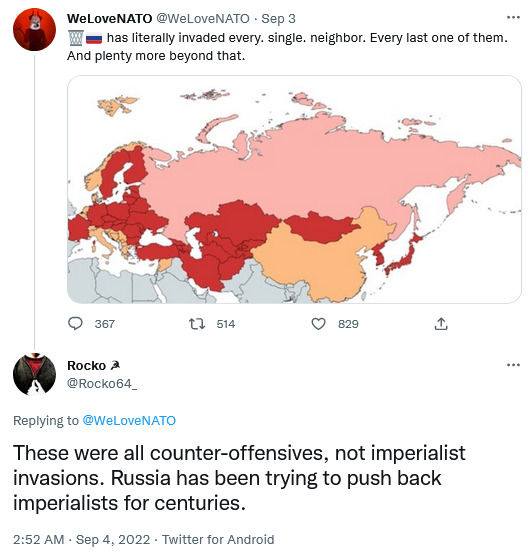
Meanwhile in tankie clownland
Russia became the largest country in the world because of "counter-offensives"….
It's almost funny how most tankie clowns claim to be communists while simultaneously embracing Russian fascism, supporting the imperialism of Russia’s mega-rich ruling class, mindlessely repeating the Kremlin's propaganda and cheerleading their war crimes.
These morons seem to have no idea that the Russian Federation is an empire made up of many conquered states that Russia invaded, occupied and colonised in the 16th, 17th, 18th, 19th and 20th centuries, or that Russia's war against Ukraine is a brutal attempt to reassert control over one of its former colonies. Russia's history of imperialism is at least as bad as that of any western country - and they're still doing it in the 21st century….
#russia#history#tankie#useful idiot#keyboard warrior#ignorance is strength#finland#baltic states#poland#ukraine#russian imperialism#counter-offensives#tankie clownland#alternative reality
1K notes
·
View notes
Text

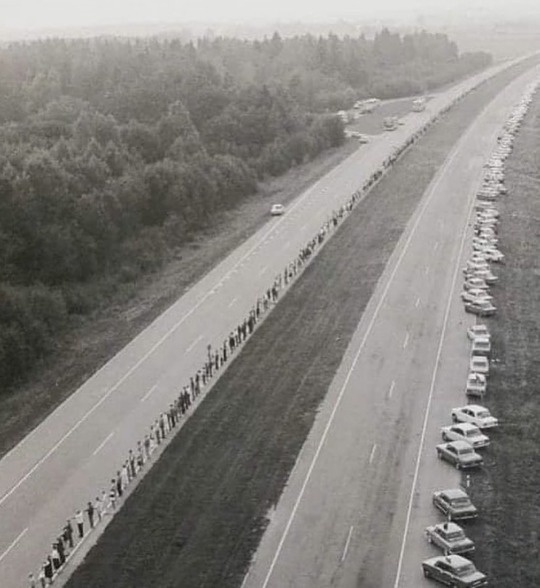
The Baltic Way, or Baltic Chain (also "Chain of Freedom") was a peaceful political demonstration that occurred on 23 August 1989.
Approximately two million people joined their hands to form a human chain spanning 690 kilometres (430 mi) across the three Baltic states of Estonia, Latvia and Lithuania, which at the time were occupied and annexed by the USSR. The central government in Moscow considered the three Baltic countries constituent republics of the Soviet Union.
The 1989 event was organised by the Baltic pro-independence movements: Rahvarinne of Estonia, the Tautas fronte of Latvia, and Sąjūdis of Lithuania, to draw global attention by demonstrating a popular desire for independence and showcasing solidarity among the three nations. It has been described as an effective publicity campaign, and an emotionally captivating and visually stunning scene.
The event presented an opportunity for the Baltic activists to publicise the Soviet rule and position the question of Baltic independence not only as a political matter, but also as a moral issue. The Soviet authorities responded to the event with intense rhetoric, but failed to take any constructive actions that could bridge the widening gap between the Baltic republics and the rest of the Soviet Union. Seven months after the protest Lithuania became the first Soviet republic to declare independence.

After the Revolutions of 1989, 23 August has become an official remembrance day both in the Baltic countries, in the European Union and in other countries, known as the Black Ribbon Day or as the European Day of Remembrance for Victims of Stalinism and Nazism.
👉🏿 https://en.wikipedia.org/wiki/Baltic_Way
#politics#baltic way#estonia#russia#latvia#lithuania#interesting#chain of freedom#baltic states#molotov ribbentrop pact#world history#tankies#putin apologists#stalinists#russian colonialism#russian imperialism#russia is a terrorist state
664 notes
·
View notes
Text
internet: omg wouldn't it be so cool to travel back in time? spend a day in the past? it would be so fun😋
baltic states:

#me: *takes out history book* name a year and a month and i'll check if i have to avoid it#history#baltic states#latvia#lithuania#estonia
185 notes
·
View notes
Text

A Soviet T34/76 tank destroyed by enemy fire by a bridge over the Voke River next to the village of Kazbiejai, Lithuania - 1941
#world war two#ww2#worldwar2photos#history#1940s#ww2 history#wwii#world war 2#ww2history#wwii era#1941#lithuania#eastern front#baltic#t34#tank#sovietunion#soviet union
64 notes
·
View notes
Text


Never forget - that wrecks are often also graves and it is important to tell their stories
SMS Prince Adalbert, Baltic Sea, 1915
#naval history#naval artifacts#shipwrecks#baltic sea#sms prince adalbert#age of steam#early 20th century
165 notes
·
View notes
Text
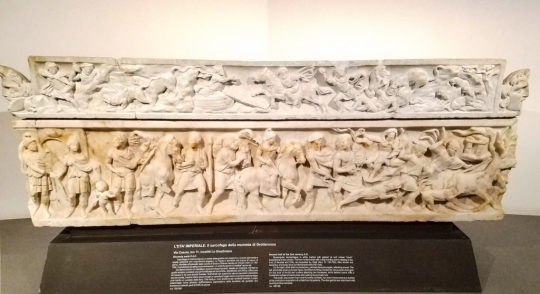

The Grottarossa Mummy and International Trade in Ancient Rome
On February 5th, 1964 a group of workmen where working on a construction job in Grottarossa, which is located in the outskirts of Rome. The men had loaded a haul of rubble into a dump truck with an excavator, but while unloading had noticed something unusual, an intricately carved marble sarcophagus which contained a small mummified corpse. As happens often in Italy, the construction workers had made an extremely important archaeological discovery.
Only two mummies from the ancient Roman period have ever been discovered in Rome itself. The ancient Romans were not big on the burial of bodies until after the rise of Christianity (cremation was popular) and mummification was not widely practiced outside of Egypt. The mummy was of an eight year old girl who had died in the 2nd century AD, most likely due to pulmonary fibrosis, although she also suffered from infections and malnutrition. Obviously, she was a very sick child before her death. Her body had been wrapped in linen coated with a resin which may have contributed to the preservation of her corpse. What is most interesting, at least to me, were the grave goods that were found on her. She was dressed in a fine silk dress, the silk coming from China. She had a doll made from ivory, the ivory most likely originating from Africa, various items made from Baltic amber, and a sapphire necklace, the sapphires coming from Sri Lanka.


Obviously the family of the girl was fairly wealthy to be able to afford an assortment of goods which came from all over the known world, not to mention the marble sarcophagus. More importantly the Grottarossa mummy shows how international trade was a vibrant and thriving aspect of life in ancient times as so many items from far flung places was found belonging to one single little Roman girl.
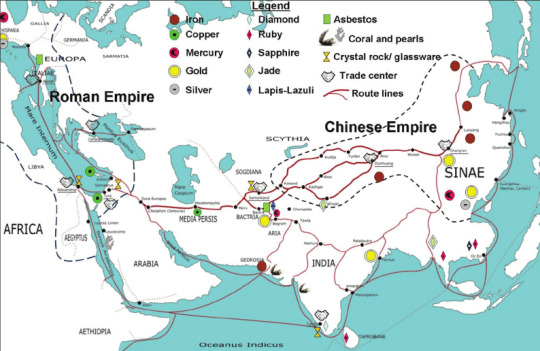
953 notes
·
View notes
Text
If Tucker Carlson was an actual journalist and had balls (rather than being a slightly confused listener to putin's rants), he would've asked the following questions:
1. So you think that Molotov-Ribbentrop pact upon which Soviet Union and Nazi Germany agreed to split up Eastern Europe and together invade Poland had nothing to do with the start of the WW2?
2. The United States once belonged to Britain, but the United Kingdom makes no claims to own it or invade it on the pretense of the many problems that the US face, so why does russia think it is entitled to the Baltic States, Poland, Ukraine, and others? Those countries showed clearly that they want nothing to do with russia and just want to be left alone, so why is russia willing to murder their civilians over, objectively false, historic pretenses?
3. What are your personal goals for Ukraine and do their match your former Prime Minister's, former President's, and current security advisor's thoughts about, quote, "erradicating all Ukrainians"?
But Tucker has no regional or historic knowledge, nor a spine to have asked these things.
And putin is a weak old man whose frail ego would've never picked a person to talk to who could've asked those questions.
So, what we ended up with was a delusional story time of an insecure dictator and his dumb entertainer.
#tucker carlson#putin#russia#interview#facts vs fiction#delulu land putin#ukraine#baltic states#poland#history
30 notes
·
View notes
Text
a friend of mine owns a circa 11th century bronze ring that a (grand-) relative found in a field ages ago. he doesn’t wear it usually. but puts it on for the summer equinox, midsummers night.
#some kind of poetry#they celebrated midsummers too#human history#baltic history#archeology#to anyone thinking it belongs in a museum#it’s a standard type ring of that period#it would reveal nothing more of the history#and to be used and held and worn in significant times#is more meaningful than having it sit in a dark cupboard#imo
1 note
·
View note
Text
Wrapped up the first of two books on the Baltic region:
Wrapped up the first of two books on the Baltic region. This one covers a somewhat-neglected aspect of the Crusades, the wars in Northern Europe between military orders and the last vestiges of paganism (and the extension of the principle of the Fourth Crusade against Veliki Gospodin Novgorod). These wars started in the 1100s but are mostly famous for two battles, both of them involving Veliki Novgorod. One is the Battle of Lake Peipus, not least for its immortalization in a Soviet anti-Nazi propaganda film by Sergei Eisenstein. The other is the Battle of Tannenberg where Poland-Lithuania fought its first major battle as a unified state and completely wrecked the shit out of the German military order facing them.
These were but two battles in a much longer process whose main contributions to history were to lay the foundation of the Baltic Germans, who were essential to holding together Tsarist Russia, and to transform Baltic Prussia into the eastern territories of the Margravate of Brandenburg, which ultimately renamed itself after these territories and as the archetypal army with a country would unify the German lands into a single state for the first time in history.
Not a single soul involved in the interminable butchery and holy wars in the Baltic Sea described here would understand that this was the ultimate outcome of the events in question. From their perspective they were Christians fighting not merely the metaphorical propaganda paganism of Islam but the last outposts of European polytheism, which fell in the 1380s when Grand Duke Jogaila of Lithuania converted and became the first ruler of Poland-Lithuania (which really should have been Lithuania-Poland as the east was the more powerful of the two but I digress).
Between the ultimate conversion of Lithuanians, Latvians, and Estonians (as we'd define them today in any event) to Catholicism, the Germanization of the Prussians, and the replacement of the unstable quasi-demilitarized Veliki Novgorod with the iron-fisted tyranny of Moscow the Northern Crusades ended in another pattern the architects of the 1100s would never have seen, nor expected. They ultimately furthered the rise of state formation and the transformation of Northern Crusades into various Northern Wars that would finally end when Tsar Peter the Great shattered the Swedes and the last vestiges for centuries of Ukrainian aspiration to escape Muscovite control in the Battle of Poltava.
9/10.
#lightdancer comments on history#book reviews#european history#medieval history#baltic history#northern crusades
2 notes
·
View notes
Text
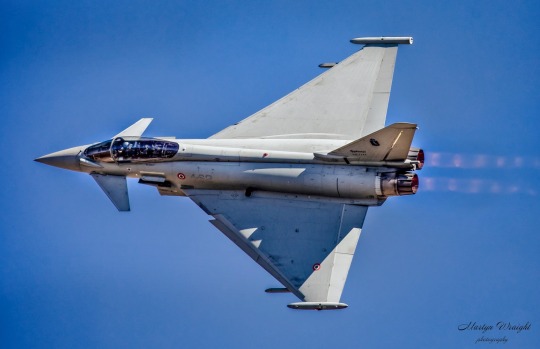
Today, the Italian Air Force Eurofighter Typhoon carried out a double interception of Russian aircraft over the Baltic Sea.
Credit: Martyn Wraight Photography.
#eurofighter typhoon#interception#baltic sea#Russia#italian air force#todaynews#aviation photography#aviation industry#military aircraft#youtube#airplane#aviation#dronescapes#military#aviation history
22 notes
·
View notes